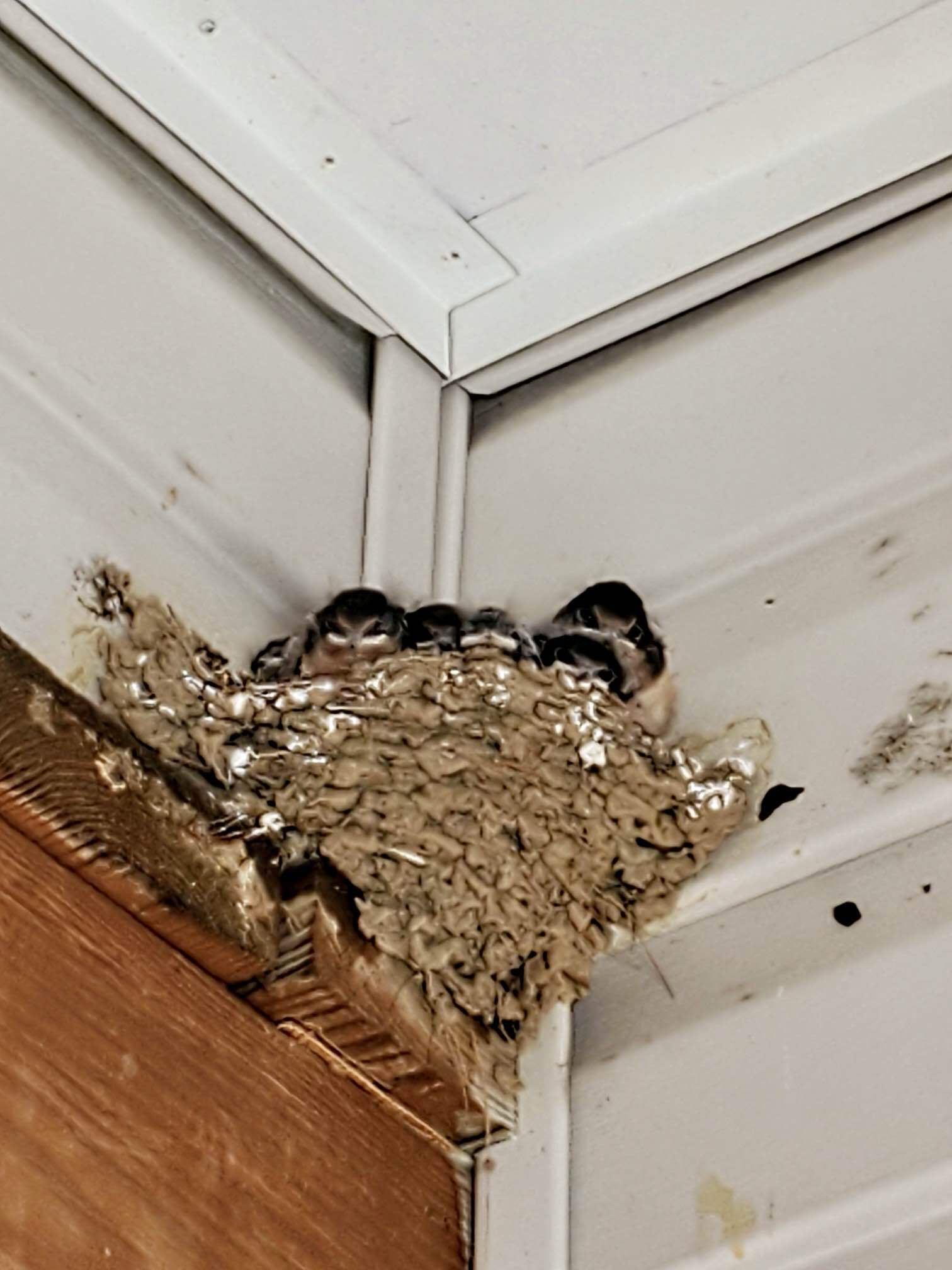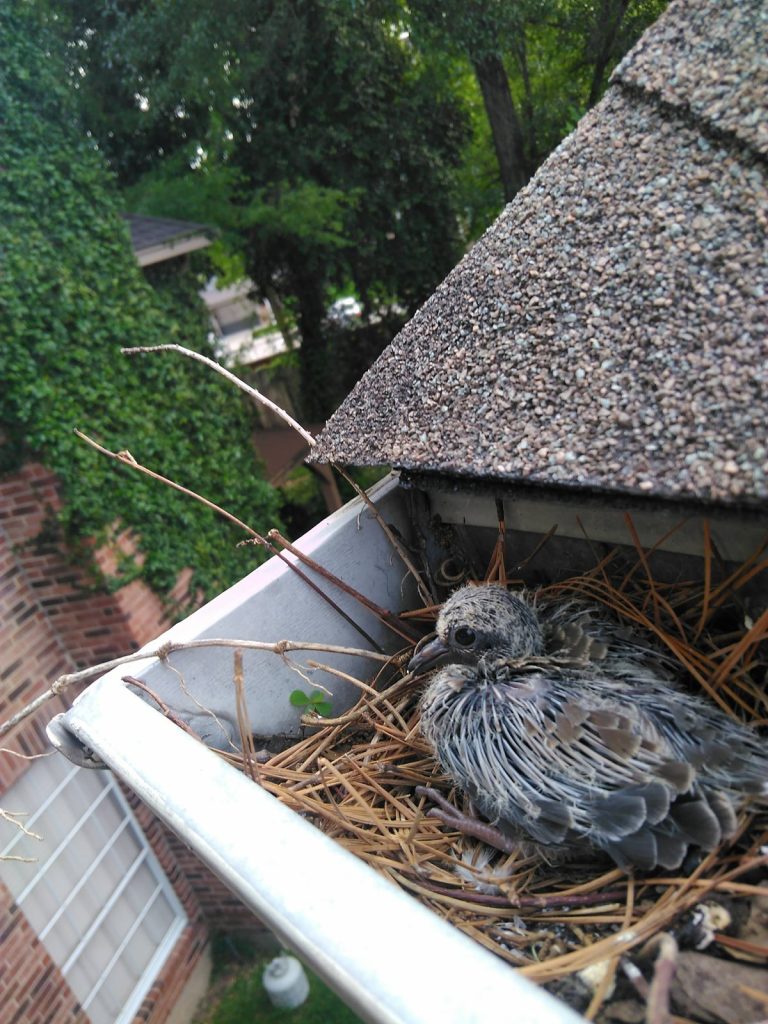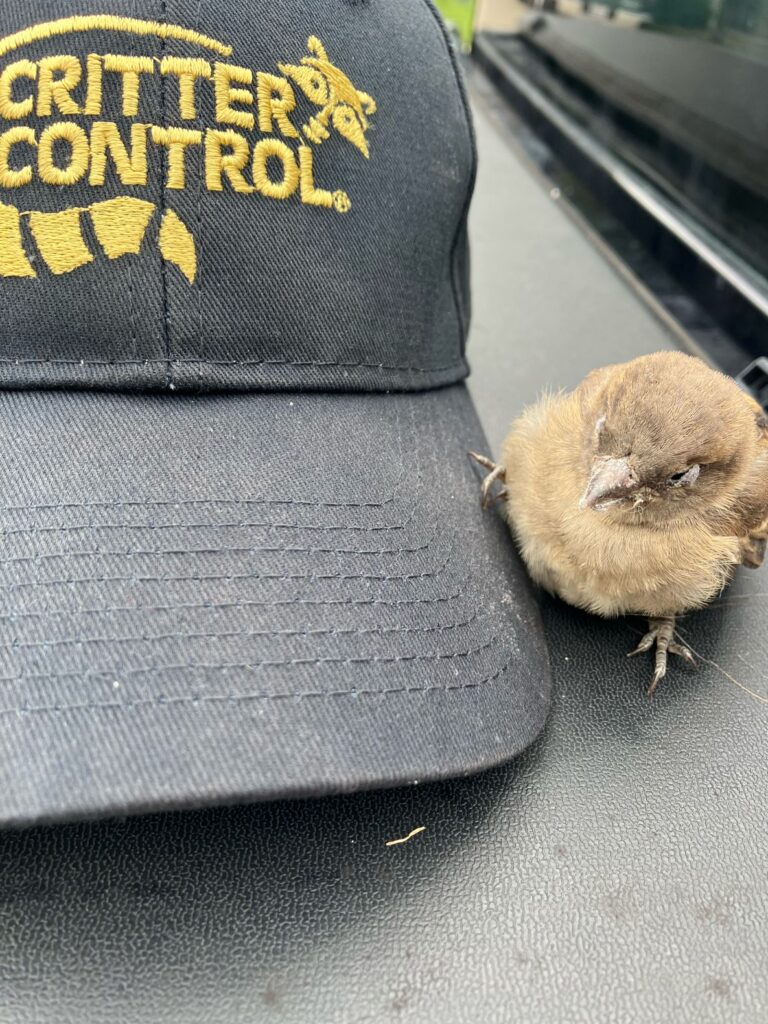
Finding a bird in the house can be a startling and frustrating experience. Birds seek out crevices, holes, and high places that protect their young from the element. Unfortunately for homeowners like you, that can include various places in and around your home, including attics, soffits, roof returns, vents, and chimneys.
Once there, they can do all sorts of damage, so if you find birds in your house, it’s important to take action to prevent a bird infestation. Our experienced team at Critter Control can help you humanely remove the feathered creatures from your home. So, if you need help with bird removal, don’t hesitate to contact us.
The most common places birds fly in your house:
Birds in the Attic
Birds fly into attics because attics provide shelter and warmth. Attics protect birds from predators and have the right temperature to breed and lay eggs. Habitat loss, degradation, or fragmentation can also drive birds into attics.
Common species include:
- Pigeons
- Barn swallows
- European Starlings
- House Finches
- House Sparrows
Exclusion is the most effective method of removing birds in the attic. Bird exclusion flaps allow the bird to leave, but they cannot re-enter.
From there, a Critter Control wildlife technician will seal all potential entrances, clean the area, and then sanitize. Critter Control recommends against DIY solutions and traps within the house, where birds may suffer or become injured. This is especially important for federally protected bird species, where the law bans harassing most species.
Birds on the Roof and Gutters

Birds will roost (settle) or nest on roofing for any number of reasons. The most likely reason is that your roof is near a food or water source. These bird infestations can soil or damage your home’s roof and cost you money.
There are several techniques we employ to deter birds in the roof from sticking around and returning, including:
- Distress calls
- Mylar tape and balloons
- Removing nest materials and food/water sources
Similar tactics are used to remove pigeons from roofs and trees.
Birds in Soffits and Roof Returns
Soffits and house corners, places where gutters meet and connect to downspouts, often attract birds. They’re a convenient source of fresh water, making them an appealing option for these feathered critters.
To prevent birds from taking up residence in these areas, it’s important to maintain clean gutters to prevent clogs and keep water from pooling. Critter Control wildlife technicians can handle bird nest removal and install gutter guards and/or screens to prevent both bird nesting and debris that could create a problem for your home’s drainage system.
Birds in Vents and Exhaust Pipes
Birds in vents may occasionally choose to nest in these areas and can even become stuck. They may squeeze into your home via the vents on the side of your house, kitchen, and bathroom exhaust vents, and similar areas.
Vents are well off the ground and safely away from predators, making them an attractive location for birds to build nests. Plus, they’re enclosed and protect against the elements, further adding to the appeal.
However, vents do come with their dangers for young birds. The little birds may fall into the vent exhaust pipe, where they’re unable to escape. Even adult birds with full flying capabilities can fall into the same trap.
Birds are often initially attracted to the warmth of the vents, which is why they’re often found in dryer vents and kitchen exhaust vents. Unfortunately, their presence and nesting materials become fire hazards. On top of that, the nests in vents are dangerous because humidity and steam can spread disease, including histoplasmosis, which is found in bird droppings.
When any of these situations occur, it’s important to call a professional with the proper equipment and expertise to minimize the stress on the animal. Once the professionals remove the bird from the vent or exhaust pipe of your home, they can install a guard to prevent further recurrence.
Birds in Chimneys
Some birds prefer to make their homes in hollow trees, and for those species, your chimney is an attractive place. One of the most prominent species is the swift family, which nest in the interiors of chimneys. While these nests aren’t a fire hazard, nests interrupt the airflow of smoke and carbon monoxide. Moreover, young birds may slip and fall out of chimneys in your home. Nests of baby birds inside chimneys will make audible rackets of chirping sounds as the hatchlings call to their mother. Finally, homeowners may be alerted to birds in chimneys by the foul smells produced by excrement or, in worst-case scenarios, dead and decaying bodies.
Critter Control wildlife technicians can remove nests and baby birds if you suspect one is in your chimney. To prevent birds in the chimney, it’s important to install a chimney cap, especially before the fall and winter, when you may be using your fireplace.
Finding Dead Birds in Your Yard
For the most part, dead birds are found in yards, but they can also be discovered indoors. Attics, chimneys, and even basements can all end up harboring a bird carcass.
Dead birds usually get in houses through vents, gaps in roofs, and other small openings when alive. It’s usually only through the odor of decomposition that residents become aware of the presence of the pests.
Safety Concerns
If you find the body of a dead bird, it’s important to take proper steps to dispose of the body quickly and safely to avoid contracting diseases or attracting additional pests. Left alone, the body of a bird will naturally decompose with the help of insects like blowflies, ants, and cockroaches.
Disposing of the body is crucial to avoid attracting pests to your home. Additionally, birds that died from a virus or bacterial infection may still be capable of transmitting their fatal illness, such as West Nile virus or salmonellosis, to nearby humans. Finally, as bird bodies break down, they release foul-smelling gasses and fluids capable of staining ceilings and walls.
Dead Bird Removal
To limit exposure to dead birds, it’s important to take steps to keep live ones away from your yard. While it’s nearly impossible to exclude birds from your property completely, a combination of limiting food sources and nesting sites can deter them. If you find a dead bird in the house or yard, never approach or handle the carcass. Instead, contact the trained professionals at Critter Control to safely handle dead bird removal.
How to Catch a Bird in Your House
Birds can make their way into your home via open doors and windows, and once inside, they may become panicked. If left alone without access to food or water, they may survive for a few days to a week, although their survival time may become shorter due to stress and a lack of resources.
If a live bird has made its way into your house, stay calm and close off the room to prevent it from flying into other areas. Open any windows or doors to create an easy exit. If the bird doesn’t fly out on its own, you can use a towel or lightweight sheet to gently guide it toward the open space. Alternatively, you may place a box or container over the bird and slide a piece of cardboard underneath it to safely carry it outside.
If you can’t get the bird out of your home or are uncomfortable handling it, our expert wildlife technicians at Critter Control can help.
Contact Critter Control for Bird Removal
Bird infestations can quickly get out of hand, resulting in damage to your property and posing various health risks. If you’ve noticed birds nesting in your attic, vents, gutters, or any other part of your home, contact our experienced team at Critter Control. Our wildlife technicians can effectively and humanely remove the birds from your home to ensure it’s safe, clean, and bird-free.
If you’re searching for “bird removal near me,” look no further than our skilled wildlife technicians at Critter Control. Contact us today at 1-800-274-8837 or find an office near you for help evicting birds in the house.
